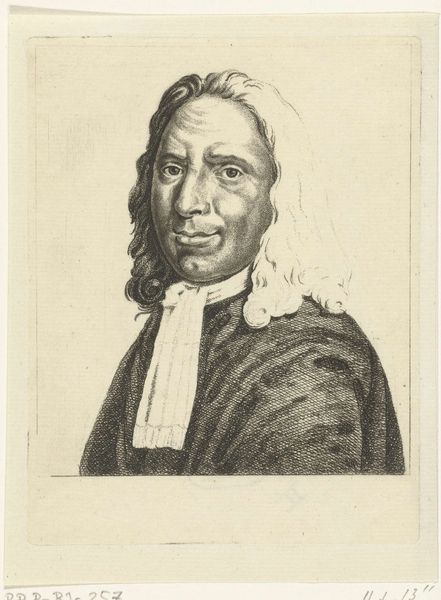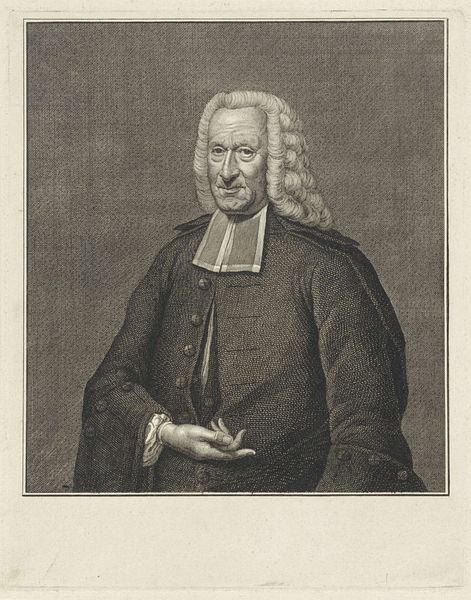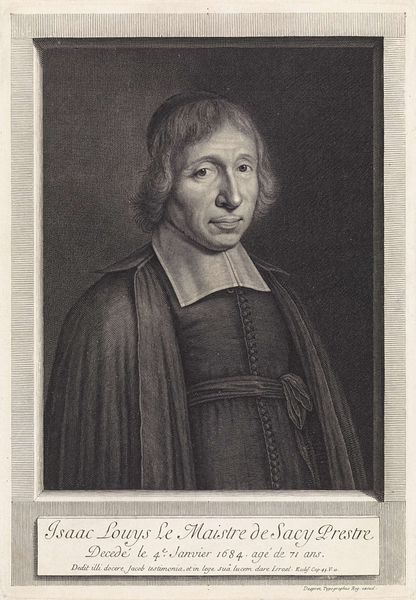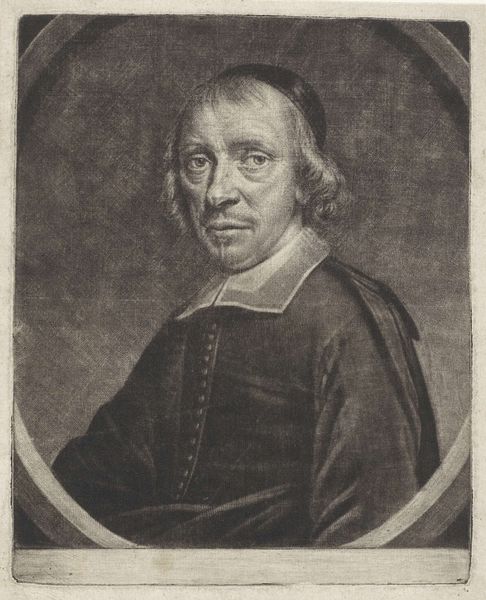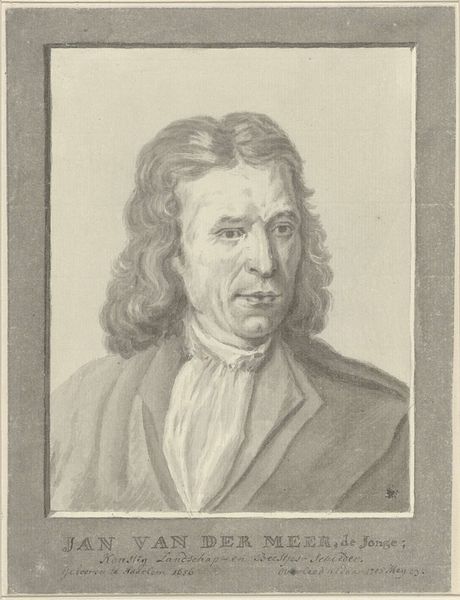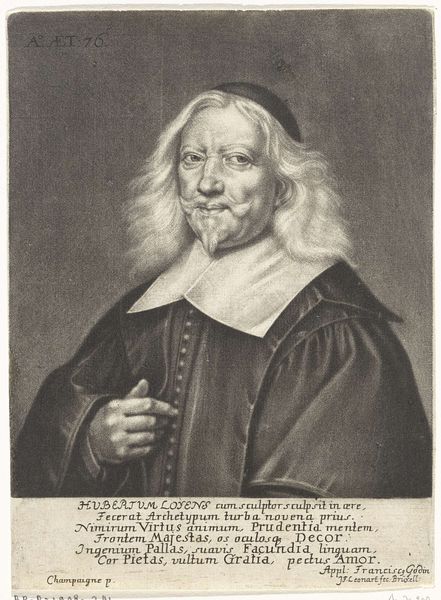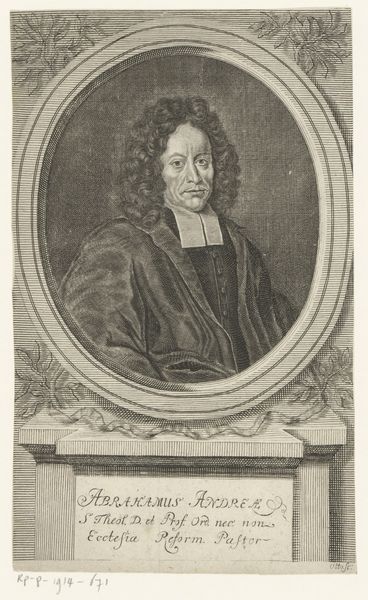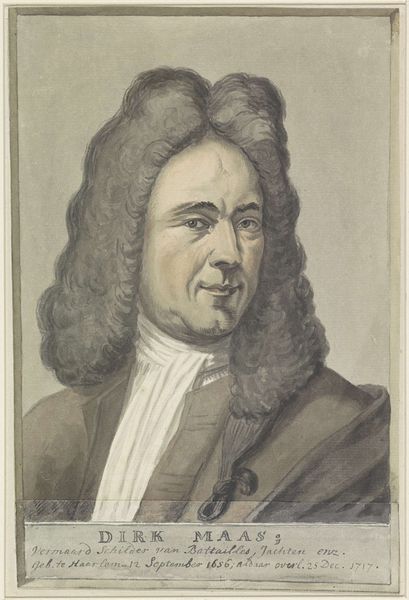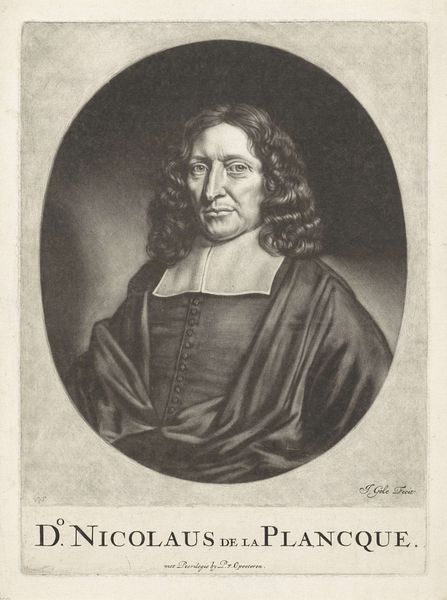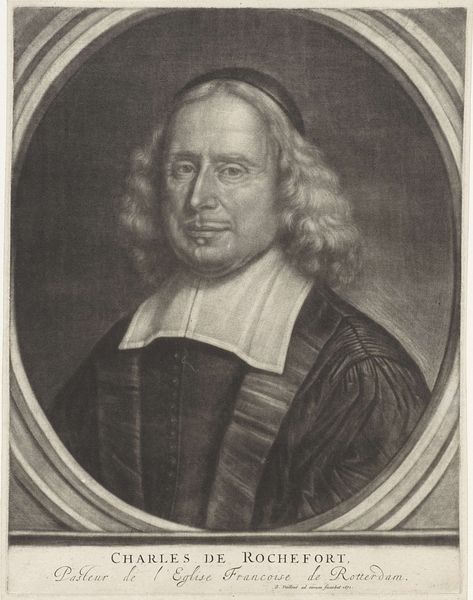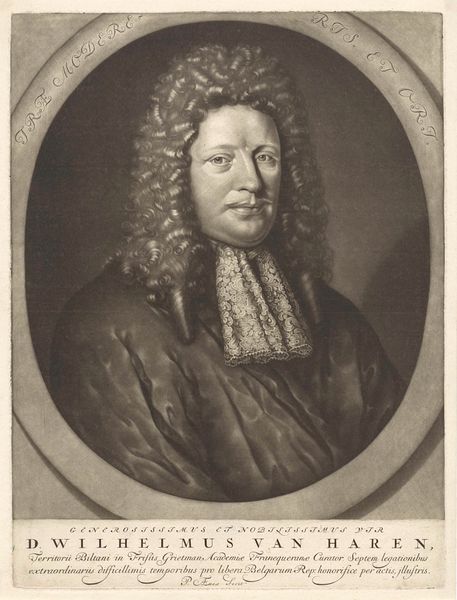
Dimensions: height 124 mm, width 96 mm
Copyright: Rijks Museum: Open Domain
Ernst Willem Jan Bagelaar made this print of Albert Cuyp sometime in the late eighteenth or early nineteenth century in the Netherlands, using etching and engraving. It is a portrait of one artist by another and we have to ask ourselves, what can prints like this tell us about the place of artists in Dutch society at this time? Bagelaar was part of a well-established printmaking industry in the Netherlands, one that served to promote Dutch culture and history. This engraving performs that function, representing one of the most famous Dutch Golden Age painters in a style that suggests refinement and status. The image attempts to capture the essence of Cuyp as a cultural hero, part of a canon of great Dutch artists. Prints like this were often commissioned by institutions like museums or historical societies, reflecting and reinforcing cultural values. By studying the printmaking industry, archive records and institutional collections, we can learn a lot about the social and cultural life of the Netherlands at this time.
Comments
No comments
Be the first to comment and join the conversation on the ultimate creative platform.
